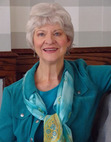Heidi M. Thomas's Blog
December 24, 2024
Christmas on the Ranch
(Reposted from December 2022)
Snow drifting lazily from the sky, the spicy scent of the pine tree twinkling with lights, platters and tins of cookies galore, and board games.

Christmas eve was always the “real Christmas” when I was growing up. An evening to look forward to for weeks of shining anticipation and wonder and awe.
It all started in 1948, when my mother emigrated from Germany. She arrived in November, just in time to experience the American Thanksgiving holiday, lots of snow, an outhouse, no electricity, and life on a ranch with real cowboys.
In December she received a letter, which had been lost and rerouted several times, informing her that, although she had spent two years filling out reams of forms in duplicate and triplicate, she was still lacking documentation to stay in America, and would have to return to Germany after the New Year.
Unless she was married.
Yes, she had come to America to marry my dad, but it became imperative this ceremony happen before the end of the year. After a search, they found a minister in a town 75 miles away willing to marry them on short notice. But because he was to leave on vacation right after Christmas, the only day available was December 24. And, because that evening was the church’s Christmas eve service and children’s program, the slot open was 4 p.m.
Since my dad’s family lived in “the middle of nowhere” in eastern Montana, and being practical, frugal ranchers, they couldn’t simply go to town for a wedding. No. Grandpa and Dad hitched up a trailer to the car, and they would pick up a load of feed—“as long as we’re in town anyway.”

So, at 4 o’clock on December 24, 1948, my parents were married on the pine-bough decorated stage in the Lutheran Church in Forsyth, Montana. A celebratory dinner at the Corner Café and a movie “The Fuller Brush Man” completed this landmark day. Oh yes, with the load of feed, hauled home on slippery roads, and a slight delay to fix a flat tire.
Every Christmas Eve thereafter, at 4 p.m., my mother would get dressed up, my dad came in from doing chores, and we sat around the Christmas tree, having coffee or hot chocolate and eating cookies.
After supper, for several hours, we slowly and meticulously opened gifts, one at a time, carefully cutting the tape and saving the paper for next year. We savored each one—sometimes it was a picture from the Sears catalog of whatever item Mom had ordered but hadn’t arrived yet. And last, but certainly not least, Dad pulled the package from Germany from behind the tree, and we delighted in German chocolate, Lebkuchen cookies, lovely handmade lace items, or fine china coffee cups. Mom marveled over each gift, with a misty, far-away look in her eyes. I know she missed her family and would not see them again for ten years.
About the time we began folding up the Christmas wrapping, Dad or Mom would suddenly say, “Did you hear that?”
Our ears perked up as we listened. “What? What did you hear?”
“I thought I heard bells.” Or “Was that footsteps on the roof?”

We rushed out to the front porch, where a pile of gifts had been left for us by Santa. We never did catch our dad putting them out there—sneaky guy, but it was the culmination of a warm, loving, happy family evening.
I will always cherish those memories.
June 14, 2024
Sneaky Snuck
(Editor’s note: This is a reprint from June 2017)
How did the word “snuck” sneak into the dictionary and into our “approved” form of language?
This word is one of my pet peeves, and if you are an editing client of mine, I will strongly suggest that you use the “proper” form “sneaked” unless it’s in dialogue.
I think my reaction stems from growing up in an isolated rural area where most people were not highly educated (no denigration intended—they were wonderful friends and neighbors and would do anything to help each other in times of need. But a word like “snuck” that was used as slang by people who also said, “The kids had their pitcher took at school today,” is an indication of that same lack of education or care about proper English.
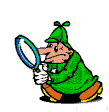
It’s like “ain’t.” That’s in the dictionary too, but it’s still not “proper” to use, except in slang dialogue.
According to wiktionary.org, “snuck” is an irregular verb form that originated in the late 19th century dialect, but is now listed as the “simple past tense and past participle of sneak.” It’s considered the nonstandard past tense—basically meaning that “sneaked” is the preferred word-choice, but “snuck” is also acceptable.
Merriam-Webster’s Etymology: akin to Old English snIcan to sneak along, Old Norse snIkja.
Here’s a link to an interesting article on “Sentence First: An Irishman’s Blog About the English Language http://stancarey.wordpress.com/2010/06/18/snuck-sneaked-in/
And this is a snippet from The Word Detective’s Q&A, who seems to agree with me:
“Yes, ‘snuck’ is a real word, although it has always been classified as ‘substandard English.’ ‘Snuck’ first appeared in the 19th century as a regional variant of ‘sneaked,’ and is still considered colloquial English, but is apparently gaining in respectability among literate folk. Still, ‘snuck’ is not the sort of word to use on your resume, although ‘sneaked’ is usually not a big hit on resumes either, come to think of it. In general, however, my advice is to stick with ‘sneaked.’ Unless you’re talking to Elvis, of course. I happen to know he says ‘snuck’.” http://www.word-detective.com/back-c.html
What are some of your “pet peeve” words that have sneaked into the English Language?
And, here’s another grammar faux pas, also a reprint from June 2017.
Sink, Sank, Sunk–Which do You Use?I’ve been noticing more and more use of words like “sunk” as the simple past tense, by authors and even in newspaper writing. For example: I sunk into the easy chair.
Here are some other examples: I’ve heard people say I seen it, when they should say I saw it. Or they will use the past tense instead of the correct past participle: We could have went to the movie.
My editor’s hackles go up!
The simple past tense of “sink” is “sank.” The word “sunk” is used as the past participle (or past perfect) and always requires the “helper” word “has” or “had.”
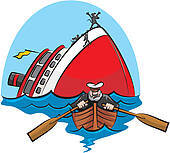
Sink: I sink the ship today.
I sank the ship yesterday.
I have sunk the ship many times.
See: I see it today.
I saw it yesterday.
I have seen it many times before.
Go: I go to the movie (or I’m going to the movie today).
I went to the movie yesterday.
I have gone to the movies many times.
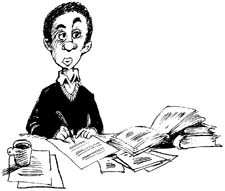
I remember memorizing many of these verb forms when I was in grade school. Maybe they don’t teach that anymore?
Share this:December 23, 2023
Christmas on the Ranch

(Reposted from December 2022)
Snow drifting lazily from the sky, the spicy scent of the pine tree twinkling with lights, platters and tins of cookies galore, and board games.
Christmas eve was always the “real Christmas” when I was growing up. An evening to look forward to for weeks of shining anticipation and wonder and awe.
It all started in 1948, when my mother emigrated from Germany. She arrived in November, just in time to experience the American Thanksgiving holiday, lots of snow, an outhouse, no electricity, and life on a ranch with real cowboys.
In December she received a letter, which had been lost and rerouted several times, informing her that, although she had spent two years filling out reams of forms in duplicate and triplicate, she was still lacking documentation to stay in America, and would have to return to Germany after the New Year.
Unless she was married.
Yes, she had come to America to marry my dad, but it became imperative this ceremony happen before the end of the year. After a search, they found a minister in a town 75 miles away willing to marry them on short notice. But because he was to leave on vacation right after Christmas, the only day available was December 24. And, because that evening was the church’s Christmas eve service and children’s program, the slot open was 4 p.m.
Since my dad’s family lived in “the middle of nowhere” in eastern Montana, and being practical, frugal ranchers, they couldn’t simply go to town for a wedding. No. Grandpa and Dad hitched up a trailer to the car, and they would pick up a load of feed—“as long as we’re in town anyway.”

So, at 4 o’clock on December 24, 1948, my parents were married on the pine-bough decorated stage in the Lutheran Church in Forsyth, Montana. A celebratory dinner at the Corner Café and a movie “The Fuller Brush Man” completed this landmark day. Oh yes, with the load of feed, hauled home on slippery roads, and a slight delay to fix a flat tire.
Every Christmas Eve thereafter, at 4 p.m., my mother would get dressed up, my dad came in from doing chores, and we sat around the Christmas tree, having coffee or hot chocolate and eating cookies.
After supper, for several hours, we slowly and meticulously opened gifts, one at a time, carefully cutting the tape and saving the paper for next year. We savored each one—sometimes it was a picture from the Sears catalog of whatever item Mom had ordered but hadn’t arrived yet. And last, but certainly not least, Dad pulled the package from Germany from behind the tree, and we delighted in German chocolate, Lebkuchen cookies, lovely handmade lace items, or fine china coffee cups. Mom marveled over each gift, with a misty, far-away look in her eyes. I know she missed her family and would not see them again for ten years.
About the time we began folding up the Christmas wrapping, Dad or Mom would suddenly say, “Did you hear that?”
Our ears perked up as we listened. “What? What did you hear?”
“I thought I heard bells.” Or “Was that footsteps on the roof?”

We rushed out to the front porch, where a pile of gifts had been left for us by Santa. We never did catch our dad putting them out there—sneaky guy, but it was the culmination of a warm, loving, happy family evening.
I will always cherish those memories.
October 5, 2023
Broken Bondage: A Story of Domestic Abuse and Healing
Welcome, Carmen! Congratulations on Broken Bondage, the second book in your series! Tell us a little about the story and what inspired this one.
Thank you for hosting me, Heidi! It’s great to be back.
The inspiration for Broken Bondage, Book 2, came from my niece’s death, which involved domestic violence. After talking with family to make sure they were okay with me writing stories about domestic violence and abuse, I dived into the Seven Tine Ranch Romance series. These books, especially Captured Secrets, Book 1, are set on the Colville Indian Reservation in Eastern Washington State where I live and where the murder took place.

The Kindle version of Broken Bondage will be on sale for 99 cents from Oct 3 to Oct 9th!! Let’s help break the bondage of abuse and domestic violence, one book at a time!!
***
The setting also includes, in Broken Bondage, the Umatilla Reservation in Oregon; and in Renewed Hope, Book 3, the Flathead Reservation in Montana.
What particular challenges and struggles did you face before first becoming published?
I struggled with huge confidence issues. Comparing ourselves with others can be the death of dreams. I never thought I was good enough. Never thought what I had to say mattered. But I learned it does!
Describe your goals as a writer. What do you hope to achieve in the next few years? What are you planning to do to reach these goals?

My goal as a writer is to be published by a larger publishing house, like Revell, a division of Baker Publishing Group. The exciting news is I do have a foot in the door with a short story coming out with Revell entitled From Cows to Kids as part of a Horses and Healing anthology.
I keep learning, attend conferences, listen to my agent’s advice, and write. I love to learn and strive to be the best writer I can. One thing writers have to do is build their email list. This is a marathon not a sprint. So I keep at it, offering a way to connect with my readers; share about me, my life, and my writing; and offer my reader friends the chance to get to know other authors.
What type of reader are you hoping to attract? Who do you believe would be most interested in reading your books?
I want to attract readers who enjoy Contemporary Western Romance and who seek happy endings with strong messages of courage, hope, healing, grace, and forgiveness.
What are your hobbies and interests besides writing?
I am a huge horse fanatic. I own two horses named Buck and Cash. I used to show and compete, but writing has most of my attention so I trail ride and enjoy being in the woods in the quiet of the morning.
I also dabble in photography, nature/animal/butterfly/bird shots, and can’t get enough of my 10 grandkids who range from 2 to 28.
What do you like most and least about being an author? What is your toughest challenge?
I love creating fast-paced stories with elements of suspense, healing, hope, and horses that lead to happily ever after. Research is a hoot! Learning new things and meeting incredible folks is one of my greatest joys.
The hardest thing for me is marketing. It’s just plain hard! But with persistence and prayer, lots of prayer, I’m trusting God to make my goals become a reality.
What parts of you will we find in your books?
You’ll find my need to succeed and not give up, my strong will, and my love of horses.
What are you working on next?
I am currently working on a trilogy that showcases Rodeo Queens and Pro Rodeo Cowboys. I’ve had the chance to attend the Miss Rodeo America Pageant in Las Vegas for the past two years and it’s been a thrill!
About Carmen
Carmen Peone is an award-winning author of Young Adult Adventure and Contemporary Romance and has lived in Northeast Washington and on the Colville Confederated Indian Reservation.
With a degree in abnormal psychology, the thought of writing never entered her mind, until she married her husband and they moved to the reservation after college.
With the love of history and the Western woman’s lifestyle, she weaves threads of hope, family, relationships, love, and faith into her stories that lead to happily ever after.
To get book news and the novella Gentling the Cowboy, sign up for her newsletter.
Grab your Copy of Broken Bondage Here
Connect with Carmen
Website and Blog | Facebook | Twitter | Instagram | Pinterest | BookBub | Goodreads
March 30, 2023
Hotels and Murders
Interview with author Kathleen Kaska
Murder at the Ponchartrain: New Sidney Lockhart Mystery
“I came to New Orleans to marry my boyfriend/partner Ralph Dixon. Unfortunately, wedding vows were not exchanged. So there’s no ring on my finger. Instead, I’m in the Louisiana swamp spying on the Ku Klux Klan while Dixon’s sitting in jail for a double murder. Back at the Pontchartrain Hotel, my bubble-headed cousin, Ruth, is interrogating the hotel’s chef. My charge, twelve-year-old Lydia LaBeau, is dressed as a voodoo queen, entertaining the locals at Pat O’Brien’s while looking for clues. Ghost detective Rip Thigbee is the only reasonably sane person assisting me on the case.
You probably think I’m making this up, but trust me, it’s just another day in my crazy life. I’m Sydney Lockhart. I solve murders. Most of which I’m the primary suspect.
So, mix yourself a Hurricane and join me in the Big Easy for another historic hotel murder case.”—Sydney Lockhart, P.I.
Kathleen, this book sounds like another page-turner! Thank you for sharing your writing story with us today.
Tell us about your writing journey and how you started writing mysteries.
I grew up wanting to be a teacher, and that’s what I became. I taught science for twenty-five years, but once I got my teaching career off the ground and had some spare time, I spent it reading. The more I read, the more I realized I wanted to write, so I joined the Austin Writer’s League, now the Writer’s League of Texas. I started writing travel articles and still contribute to Texas Highways magazine now and then. I was a staff writer for an outdoor/fitness magazine and contributed to some science textbooks. When I finally mustered up the courage to write fiction, I took creative writing classes and joined a critique group intending to write a mystery series because that is what I love reading.
How do you develop your characters? Did you have them formed in your mind before you started, or did they grow on their own as you wrote?
My characters don’t exactly form in my mind. It’s more like they walk into my life, introduce themselves, and then tell me their stories. All I have to do is write them down.
Tell us a bit about your writing process—do you do a lot of research?

Being a pantser, I just start writing and see where it takes me, but I also conduct a lot of research on the settings. My Sydney Lockhart mysteries are set in historic hotels in the 1950s. So I dig through old newspapers looking for events that took place in the hotels and their locations. I look for juicy tidbits and weave them into the plot. Here are two examples; in the first book, Murder at the Arlington (Arlington Hotel in Hot Springs, Arkansas), Al Capone used to have his own room at the hotel, so gangsters played an important role in that book. Murder at the Galvez, which takes place on Galveston Island, and I used an actual controversy surrounding an island development project. I put my own spin on the issue and used it as a possible motive for the murder. I’m delightfully surprised at what I discover if I dig deep enough.
Do you have a time set aside for writing?
Before I retired from the classroom, I wrote mainly in the morning and on weekends. Now that my time is my own, I write whenever the mood hits, as soon as my morning coffee kicks in. I write most of the day if I’m butting up against a deadline.
Do you do a lot of rewriting on your books?
I don’t often have to do many major rewrites. I spend more time tying up loose ends and maybe rearranging a few scenes. I can finished a first draft in a few months, and then spend several more editing and polishing. Because I work on different writing projects simultaneously, I have to reread what I wrote to remind myself where I left off. So in the rereading, I’m naturally editing.
Do you belong to a critique group or beta readers?
I don’t belong to a critique group right now, but when I first started writing, I belonged to several. And I highly recommend this to any new writer because what I learned from my groups was invaluable.
What would you say the theme or “take away” is from the book?
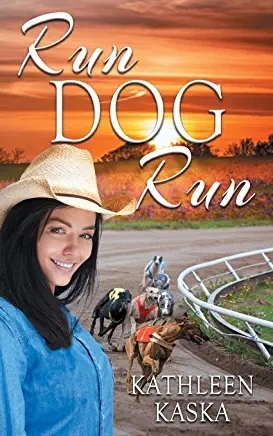
In addition to my Sydney Lockhart series, I write the Kate Caraway Animal-Rights Mystery Series. The theme for both series is strong women standing up for their beliefs. I love reading about woman going above and beyond the norm and accomplishing great undertakings and overcoming unbelievable obstacles. In Sydney’s case, she’s struggling to make it in a man’s world as a private detective in the 1950s. Kate Caraway is an animal-rights activist who has a tendency to be hotheaded and impulsive when dealing with animal rights issues. In her determination and strength to right a wrong, she often has to clean up messes she’s caused.
Since my Sydney series is lighthearted and humorous, I like to give my readers a chance to relax and have a good laugh. The characters are zany and entertaining. Since I strongly believe in animal rights, I would like my readers to become aware of some of the issues. I tackle greyhound racing in Run Dog Run, rescuing wild horses in A Two Horse Town, and in my most recent mystery, Eagle Crossing, I touch on what’s involved in operating a wildlife rescue facility. I like to refer to the Kate Caraway series as a mystery series with a cause.
Is there a specific part of the writing process that you find to be the easiest or most difficult for you?
Writing a novel is easy until I get about three-quarters the way through. That’s when the work starts. It’s like the last few steps in completing a Rubik’s Cube, the end is always the hardest in arranging things just right.
What has been your greatest challenge as a writer, and how did you cope with or overcome that challenge?

So much to write and so little time. The ideas never stop coming, so I have dozen of writing projects waiting to be finished.
Also, I’m moderately dyslexic, so catching all my errors is a challenge. I depend on beta readers, friends and family, and anyone who’s willing to read my drafts. I’ve had to develop a thick skin and, at the same time, go easy on myself. Whenever I catch a mistake in something published, it’s like a stab in the heart. That—I’m always coping with.
Why do you write, what is it that makes you do it?
I love writing because I’m creating something from the thoughts and images that flash through my mind. Writing is a craft that doesn’t require the purchase of supplies, or a studio or workshop in which to work. I just get comfortable, open my laptop, and trust the universe that all will flow, and it always does.
What is next?
Murder at the Pontchartrain, the sixth book in the Sydney Lockhart series, will be out this summer, and I’m working on number seven right now. I’m also putting the final touches on a quirky British mystery and one that is set in my hometown.
Murder at the Pontchartrain is available for pre-order now at:
https://anamcara-press.com/product/murder-at-the-ponchartrain/
Bio and Links to social media:
Kathleen Kaska is the author of the awarding-winning mystery series: the Sydney Lockhart Mystery Series set in the 1950s and the Kate Caraway Animal-Rights Mystery Series. She also writes mystery trivia, including The Sherlock Holmes Quiz Book. Her Holmes short story, “The Adventure at Old Basingstoke,” appears in Sherlock Holmes of Baking Street Anthology. She founded The Dogs in the Nighttime, the Sherlock Holmes Society of Anacortes, Washington, a scion of The Baker Street Irregulars.
Visit her website to read her humorous blog, “Growing Up Catholic in a Small Texas Town,” because sometimes you just have to laugh.
Kathleen is the owner of Metaphor Writing Coach. She coaches new and emerging writers and helps them discover their unique voices, and guides them as they learn the craft of writing and the art of storytelling. Kathleen also edits manuscripts and advises writers on how to find the right publisher.
Contact Kathleen at:
http://www.facebook.com/kathleenkaska
https://www.instagram.com/kathleenkaska/
https://anamcara-press.com/https://metaphorwritingcoach.com/
Tweets by KKaskaAuthorMarch 16, 2023
The Road Between Two Skies
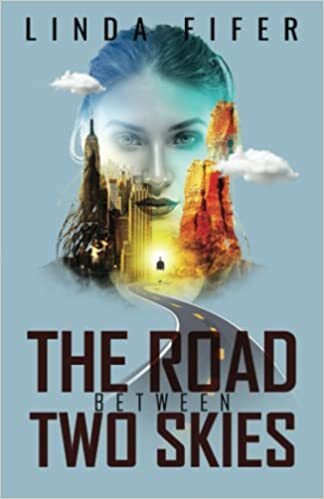
“I have two names…Brenniss and Maggie…”
Because of a bizarre abduction, Brenniss’ promising future is shattered. Her memory loss requires rediscovery of herself as Maggie in an unfamiliar world. She recalls only pieces of who she was embedded in tragic events, while new friends support her self-acceptance as the survivor she is. Only by saying goodbye can reconcile her past and present.
***
Linda, congratulations on your debut novel, The Road Between Two Skies. Tell us what inspired you to write this story.
This book flowed out of me once I wrote “I have two names…Brenniss and Maggie.” I’ve been fascinated with persons who disappear from a normal life and relationships, only to be discovered months or years later, with no recall of this previous life, living an equally “normal” life with perhaps a new spouse and different job. I wanted to present a story of resilience, of survival and the insight to discover that new path.
What was your experience in writing this book? Was it a difficult subject to write about?
I was compelled by the characters and how they interacted, as well as reacted, to the circumstances of the story. How would a widower respond to an unknown woman who had been battered: a man who watched his wife die, now watching a woman fighting to live? How does a sheriff manage an investigation of a crime of which he has few clues and fewer resources? How does Brenniss/Maggie make sense of her situation with no memory to cue her?
I incorporated my own professional knowledge as a Speech/Language Pathologist: memory loss, language, sentence structure, concepts, and verbal expression.
Your characters are so well-drawn. How did they develop? Did you have them formed in your mind before you started, or did they grow on their own as you wrote?
I pictured each character and their reactions in various settings as I “cooked” the ideas, months before I set pen to paper. They continued to add layers to their personalities as I rewrote portions, as well. I figured if I didn’t believe the characters, a reader wouldn’t either.
Tell us a bit about your writing process—do you do a lot of research? Are you an outliner or a “pantser”?
I’m afraid I’m a “pantser,” getting the story line down, first, then developing the characters and dialogue. But as I needed believable details, I did do extensive research. I use outlines, but more for facts. To me, an outline isn’t dynamic enough for something like a novel. The story lines may change or modify from the original outline.
Do you have a time set aside for writing? Did you do a lot of rewriting on this book? When I write more spontaneously, I get so absorbed in the characters and dialogue, 4, maybe 6 hours pass, and I don’t realize it. I still need to revise, but I have a more intense awareness of the characters when I return to the chapters.
What is your writing background? I did my share of writing bad poetry in junior high and high school; I wrote songs from high school to the present day (I wrote a song which the fictional Bonnie Meacham sings which is imbedded in The Road Between Two Skies). I even wrote a musical. It seems that writing was for my own expression. But my first real success was getting a poem published in a publication in Spokane, WA, then a local poetry contest; I considered that luck more than talent. But this book, started as a hobby, was something I became increasingly serious about. That led me to take the plunge toward its publication.
What would you say the theme or “take away” is from the book? We all have difficult losses to face: losing a pet, a job, a spouse, a child, your grandmother’s locket, a home. Each loss requires us to lose a part of ourselves. To define ourselves again we need to create a more encompassing identity. That journey is what Brenniss/Maggie is about. The only way she heals is by accepting the changes in her as her new foundation. Defining ourselves only by our defeats doesn’t allow us to grow.
What was your experience in finding a publisher for your book? For about 6 years, I sat on my duff and talked myself out of ever doing anything with this book because I felt hindered by my own skill level and the lack of an agent in a small town or rural area. Previously cautious about self-publishing, I started reading encouraging information about reliable self-publishing/hybrid publishing companies. Atmosphere Press was endorsed by Writers Digest, so I contacted them for an interview and within a few weeks, I had a contract and started the process. Atmosphere was terrific to work with due to their dynamic and knowledgeable staff. They were with me through the whole rewrite process, and now in support of my marketing.
Is there a specific part of the writing process that you find to be the easiest or most difficult for you? Everybody gets a writing block and mine usually occur about ¾ of the way through the book. I know how I want the story to end, but I can’t seem to connect where I am to that end. So, I played a little with point of view. It broke my block, because I could see a larger picture that didn’t repeat former information. The most difficult part of writing for me has been to believe in myself.
Where can we find your book? Amazon, Kindle, Barnes and Noble and, of course on my website: Lsfiferauthor.com.
What is next? Many have asked if I have a sequel in mind for The Road Between Two Skies and I don’t. I felt I told the story I wanted to tell in that book, but it is flattering to me that the characters were realistic enough that people want more about them.
My next book is Discovering the Grain. Izzy Stark is on a mission to fix up the house her late husband Dave inherited from his favorite uncle. She needs to heal from her husband’s death from an IED explosion just weeks before his discharge from the Army, as much as the house needs repair.
Links to social media: My website: Lsfiferauthor.com where you will find the first 27 pages of the book as a sample, where you can order the book, contact me or write those valuable reviews that entice future readers. Also: Goodreads.com for connections to other readers who have read my book and where you can also write your own review.

Bio
Linda Fifer grew up in Ohio surrounded by musicians and writers. She graduated from Kent State University with BS and MA degrees in Speech/Language Pathology, although originally started in theatre. She moved west to Montana and has spent several years in north Idaho. She has written a musical, songs and poems, been published locally in newspapers and more recently in Spokane Writes. Now retired after a 44-year career in Speech Pathology, she is inspired to create uplifting stories involving women who discover their strengths despite demanding challenges. Living in the west with her husband and two dogs, Linda is inspired by the nature surrounding her.
March 9, 2023
Captured Secrets:
At some point, we have to release the secrets that keep us captive
Carmen Peone is debuting her new Christian Romance series this week, with Captive Secrets. Welcome to my blog, Carmen!
I want to thank Heidi for hosting me today!

Why do you write, what is it that makes you do it?
I write because I enjoy telling clean romance stories with a purpose. Most of all, I love the research aspect of writing: learning new ways of life, meeting new people, and experiencing new things. It’s such a fun and rewarding process.
What is your writing process?
I start with Susan Mae Warren’s SEQ or Story Equation. This helps me find the character’s goals, flaws, superpower, moral center, wound, greatest dream, dark moment story, lies, and competing values. This teaches me the heart of the characters. From here, I go to SMW’s LINDY HOP, a light plot of the main story elements, including romance. Writing is as smooth as a lake’s surface during calm early morning hours when all these key factors are in place.
Is there a specific part of the writing process that you find to be the easiest or most difficult for you?
Coming up with obstacles the character must overcome can be hard. Writers don’t always like to see our main characters get hurt in any way, but we have to for our reader’s sake. Who wants to read safe, boring books? Not me.
What has been your greatest challenge as a writer, and how did you cope with or overcome that challenge?
My greatest challenge was to believe I was good enough. I went to college and received an abnormal psych degree, not an English, journalism, or creative writing degree like most of my fellow writers. I’ve been completely self-taught by taking classes, studying books on craft, reading the kinds of books I’d like to write, and going to conferences.
Many of your books have a Native American theme. How much of your experiences play into your stories?
The reason most of my books include Native Americans is because I’m married to a Colville Tribal member, have a full-blooded mother-in-law, and reside on the Colville reservation in northeast Washington state. My kids and grands are also enrolled members. Living on the rez has given me a wealth of experiences. When I coordinated the after-school program, we brought in various elders to teach traditional ways of life. I’d also worked with an elder to learn the Salish language (specifically Arrow Lakes) and cultural traditions as well.
Tell us a little of what Captured Secrets is about?

The book opens with Sydney and her sister sending off their folks for a much-needed vacation. But, unfortunately, they are in a fatal car accident and don’t make it to the airport. Sydney’s goal is to save the ranch from financial ruin.
Luckily, a handsome photographer lands on the ranch’s door steps the day of the accident. On a working vacation, his plans take a turn when he decides to stay and help Sydney save the ranch.
Secrets come to light, including her abusive ex-husband and the daughter she’d given up at birth. There are a lot of twists and turns in this story. But the ending is a happy one.
How did this book come about? I understand it’s based on a true incident from your family.
Captured Secrets is actually inspired by my niece’s murder. Also a Colville Tribal member, she was beaten to death by her husband fourteen years ago. So the Seven Tine Guest Ranch Romance trilogy is about three Native women who escape their abusers and find safety at the fictional guest ranch located on the reservation. They find healthy relationships with cowboys and learn what love is: gentle, caring, and healing.
Did you do a lot of research on the subject matter?
Yes, I did. I went to a ranch near the place I set the fictional ranch and interviewed a rancher, I interviewed my veterinarian for horse illnesses and medications, and I researched and talked with women who’ve been abused.
What would you say the theme or “take away” is from the book?
This is a Western Christian romance. Your previous books have been Young Adult. How did you decide to write in this genre?

These books advocate for abuse, domestic violence, and Murdered and Missing Indigenous Women. My message is to Get Help! Get Out! I don’t want another woman to die at the hands of her abuser. And I don’t want a family to experience what mine has. You can find resources for abuse on my website: https://carmenpeone.com/resources/
I wrote my teen books for one reason: to leave a legacy of culture and faith for my kids, grandkids, and other family members. I knew I would switch genres at one point, and I knew that switch would be to romance because I love…love. I love happy-ever-afters. And I love healthy relationships.
What is next?
Book 2 of the Seven Tine Ranch Romance series will release on Oct. 3, 2023, and book 3 will release on March 6, 2024. I’m currently working on a trilogy about rodeo queens and rodeo cowboys. This will be a fun change because there were many tears while writing this current series.
I relived the images of my niece’s battered body, the week in the hospital before they took her off life-support, and the trial.
Though it was worth writing this trilogy, I’m ready for something fun and spunky. I love the western lifestyle and have/show/compete on my horses. Well, I don’t do much competing anymore, but I still ride all the time. My husband and I have rodeoed (we met on a college rodeo team) so this is a natural fit for my writing.
How many books do you have published?
I have twelve books published, including three workbooks that accompany my teen books and a “how to write fiction” workbook for teens.
Where can we find your books?
You can find these books anywhere books are sold or on my website: https://carmenpeone.com/ You can also sign up for my newsletter. By doing so, you will get by novella for free: Gentling the Cowboy. Sign up here: https://bit.ly/3WyltBG
Links to social media:
Website and Blog | Facebook | Twitter | Instagram | Pinterest | BookBub
Bio
Carmen Peone is an award-winning author of Young Adult and Contemporary Western Romantic Suspense and lives with her husband in Northeast Washington and on the Colville Confederated Indian Reservation.
She had worked with a Tribal Elder, Marguerite Ensminger, for three years learning the Arrow Lakes Language and various cultural traditions, which led to her writing career.
With the love of history and the western woman’s lifestyle, she weaves threads of healing, hope, and horses into her stories. With a thread of romance.
December 23, 2022
Christmas on the Ranch

Snow drifting lazily from the sky, the spicy scent of the pine tree twinkling with lights, platters and tins of cookies galore, and board games.
Christmas eve was always the “real Christmas” when I was growing up. An evening to look forward to for weeks of shining anticipation and wonder and awe.
It all started in 1948, when my mother emigrated from Germany. She arrived in November, just in time to experience the American Thanksgiving holiday, lots of snow, an outhouse, no electricity, and life on a ranch with real cowboys.
In December she received a letter, which had been lost and rerouted several times, informing her that, although she had spent two years filling out reams of forms in duplicate and triplicate, she was still lacking documentation to stay in America, and would have to return to Germany after the New Year.
Unless she was married.
Yes, she had come to America to marry my dad, but it became imperative this ceremony happen before the end of the year. After a search, they found a minister in a town 75 miles away willing to marry them on short notice. But because he was to leave on vacation right after Christmas, the only day available was December 24. And, because that evening was the church’s Christmas eve service and children’s program, the slot open was 4 p.m.
Since my dad’s family lived in “the middle of nowhere” in eastern Montana, and being practical, frugal ranchers, they couldn’t simply go to town for a wedding. No. Grandpa and Dad hitched up a trailer to the car, and they would pick up a load of feed—“as long as we’re in town anyway.”

So, at 4 o’clock on December 24, 1948, my parents were married on the pine-bough decorated stage in the Lutheran Church in Forsyth, Montana. A celebratory dinner at the Corner Café and a movie “The Fuller Brush Man” completed this landmark day. Oh yes, with the load of feed, hauled home on slippery roads, and a slight delay to fix a flat tire.
Every Christmas Eve thereafter, at 4 p.m., my mother would get dressed up, my dad came in from doing chores, and we sat around the Christmas tree, having coffee or hot chocolate and eating cookies.
After supper, for several hours, we slowly and meticulously opened gifts, one at a time, carefully cutting the tape and saving the paper for next year. We savored each one—sometimes it was a picture from the Sears catalog of whatever item Mom had ordered but hadn’t arrived yet. And last, but certainly not least, Dad pulled the package from Germany from behind the tree, and we delighted in German chocolate, Lebkuchen cookies, lovely handmade lace items, or fine china coffee cups. Mom marveled over each gift, with a misty, far-away look in her eyes. I know she missed her family and would not see them again for ten years.
About the time we began folding up the Christmas wrapping, Dad or Mom would suddenly say, “Did you hear that?”
Our ears perked up as we listened. “What? What did you hear?”
“I thought I heard bells.” Or “Was that footsteps on the roof?”

We rushed out to the front porch, where a pile of gifts had been left for us by Santa. We never did catch our dad putting them out there—sneaky guy, but it was the culmination of a warm, loving, happy family evening.
I will always cherish those memories.
July 2, 2022
Happy Independence Day!
Most of us are happy to have a “day off,” to spend it with family and friends, barbecue, and watch fireworks. But do we take the time to really remember the significance of the holiday. It is to celebrate our freedom from tyranny. How much longer will we enjoy this?
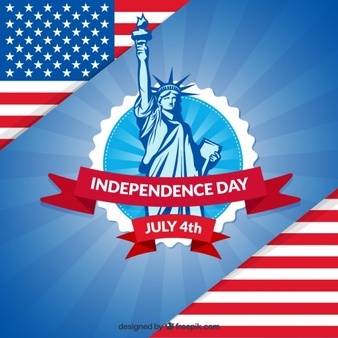 4th of July Fun Facts
4th of July Fun Facts
1. The Declaration of Independence was not signed on July 4, 1776. That’s actually the day it was formally adopted by the Continental Congress, but it wasn’t signed by most signatories until August.
2. American typically eat 150 million hot dogs on Independence Day, “enough to stretch from D.C. to L.A. more than five times,” according to the National Hot Dog and Sausage Council.
3. Three presidents have died on July 4: Thomas Jefferson, John Adams, and James Monroe.
4. John Adams believed that American independence should be celebrated on July 2, as that’s the actual day the Continental Congress voted for independence in 1776.
5. Annoyed that Independence Day wasn’t celebrated on July 2, Adams reportedly turned down invitations to July 4 celebrations throughout his life.
6. Massachusetts became the first state to make the 4th of July an official state holiday in 1781.
7. President Zachary Taylor died in 1850 after eating spoiled fruit at a July 4 celebration.
8. The famed Macy’s fireworks show in New York City uses more than 75,000 fireworks shells and costs about $6 million.
9. Nathan’s Famous Hot Dog Eating Contest is held annually on July 4. In 2018, champion Joey Chestnut ate 74 hot dogs with buns in just 10 minutes.
10. Independence Day became a federal holiday in 1870.
11. As of 2016, July 4 was the number one holiday for beer sales in the U.S., according to the National Beer Wholesalers Association.
12. In 1778, George Washington gave his soldiers a double ration of rum to celebrate the July 4 holiday.
13. Every July 4, descendants of the signers of the Declaration of Independence tap the Liberty Bell 13 times in honor of the original 13 colonies.
14. Eating salmon is a July 4 tradition in parts of New England.
15. Small towns in the U.S. typically spend between $8,000 and $15,000 on their fireworks displays.
16. President Calvin Coolidge was born on July 4, 1872.
17. About 16,000 July 4 fireworks displays happen around the country each year, according to the American Pyrotechnics Association.
18. Starting in 1818, new stars and stripes were added to the American flag each July 4 to make the creation of new states.
19. The U.S. Flag Code offers guidelines for flying the flag on July 4, and every day.
20. John Hancock has the largest signature on the Declaration of Independence.
21. The first July 4 celebration took place at the White House in 1801, hosted by Thomas Jefferson.
22. One World Trade Center in New York is 1,776 feet tall to mark the year the U.S. declared its independence from Britain.
(Thanks to info first published in Parade by Lindsay Lowe.)
May 7, 2022
Happy Mother’s Day
As we commemorate motherhood this weekend, I celebrate my mother, Rosel Engel Gasser.
 Mom as a young woman
Mom as a young womanShe grew up in war-torn Germany, experiencing the hardship, lack of food, bombing, seeing family members wounded and taken prisoner. She worked hard, persevered, and had her eyes set on “something better.”
As a nurse, she took care of the wounded, including an American GI, a friend of my dad’s. Don Gasser was in the Army, part of the American occupation after WWII ended and stationed in Mom’s small town of Bad Orb.
He went to the hospital to visit his friend, met the nurse, and they hit it off. He befriended her family, took them food, and gave them encouragement as they dug themselves from the wasteland of war.
 Wedding 1948
Wedding 1948After a few weeks or months, the Army shipped Dad home with no notice. By the time he arrived, he decided he really liked this vivacious German girl. He wrote her a letter and asked if she would consider coming to America to marry him. She wrote back “Yes!” looking forward to the “land of milk and honey,” the opportunity for a fresh new start.
However, it took two years of endless paperwork before she was able to make the trip.
I have always thought how courageous she was to leave her family, her home, and her friends to move to a new country, with a new language, different culture (from urban to a ranch in the middle of nowhere), not knowing anyone except this man she hadn’t even seen for two years! And in 1948, people still looked at Germans as “the enemy.”
Life in eastern Montana was not “milk and honey.” It was eking out an existence in the heat and droughts of summer, brutally cold winters, and the uncertainty of making a living ranching and farming.
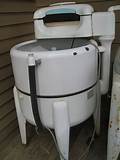

She threw herself into the partnership with my dad, working alongside him while keeping an immaculate house. During the first years, she had no hot and cold running water, so she washed clothes by hand. A gas-powered washing machine made life a little easier, but the water had to be carried by the bucketful to fill the washer and then to empty it. A coal-burning stove in the kitchen heated two rooms in the winter, and she prepared nutritious meals on it as well as heating the iron for pressing clothes.
Before my brother was born in 1955, my dad remodeled a storage room for a kitchen, complete with electric appliances and a washer and dryer. My mom was ecstatic.
Mom worked hard all her life, set a godly & moral example, and taught me to be a strong, independent woman who could accomplish whatever I set out to do.


I look back and thank her today for the woman she helped to shape in me.
To memorialize and understand her better, I’ve written two novels: Seeking the American Dream and Finding True Home, based on her life.

